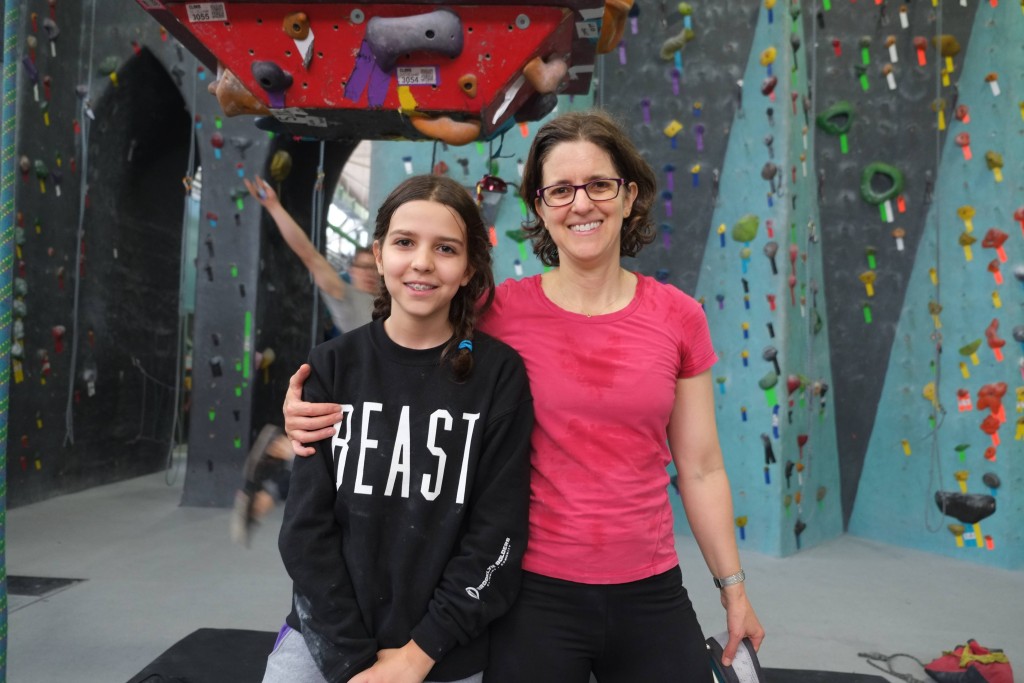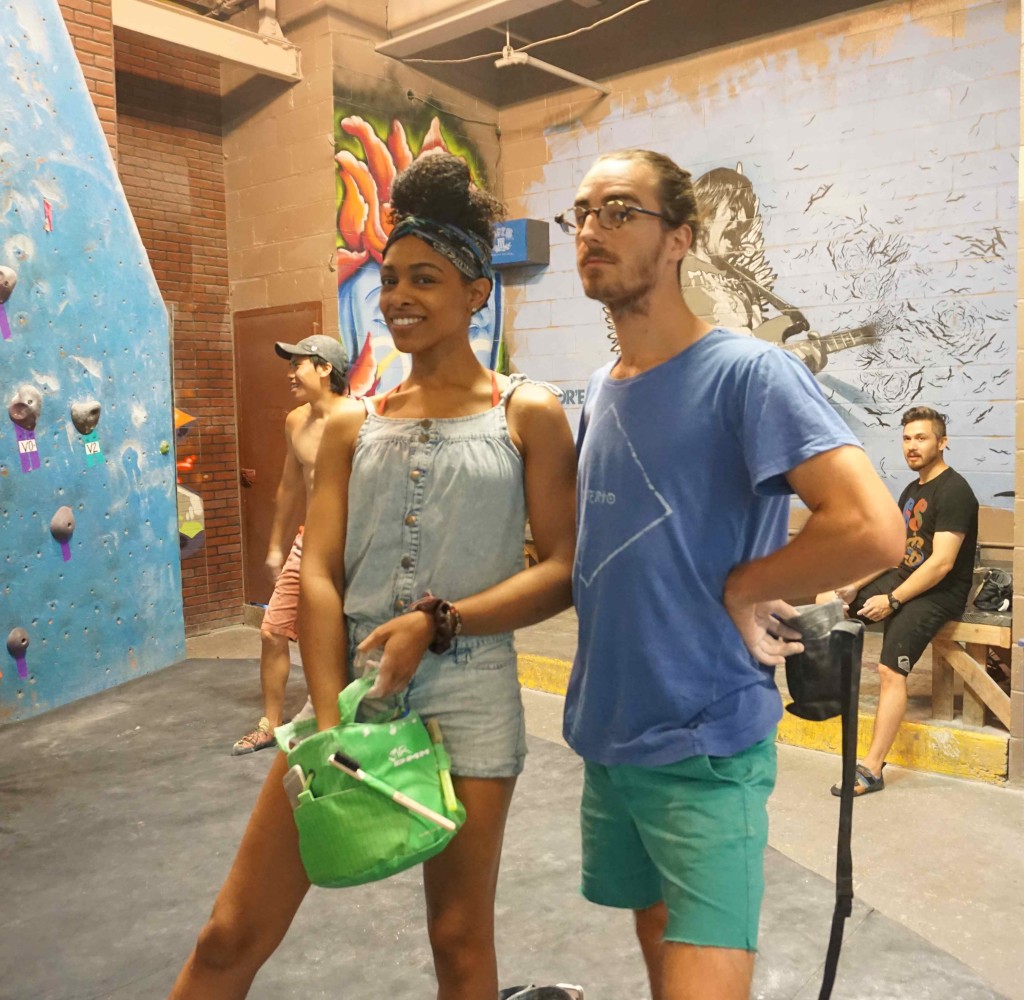I’ve been climbing for a just over a year now. The first time I pulled on real rock was only a few months ago. Before that, I only gripped plastic simulations of the ‘real thing’ climbing indoors. Even in an urban climbing community, I was quickly introduced to the niche battle over what constitutes ‘real’ climbing, or what makes a person a ‘real’ climber.
by Cyrena Lee
banner photo: Mikhail Martin, founder of Brothers of Climbing, showing us that the future of climbing is diversity.
Most contend that “dirtbag climbers” are the most orthodox, the ones who live and breathe to get their hands dirty and fingers destroyed out in the wild. But as climbing grows in popularity, the scene has changed drastically, and dirtbagging has been proclaimed dead by professional climber and filmmaker Cedar Wright. What is a dirtbag climber? He quotes this definition of the dirtbag climber from Urban Dictionary as the most accurate:
“A person who is committed to a given (usually extreme) lifestyle to the point of abandoning employment and other societal norms in order to pursue said lifestyle. Dirtbags can be distinguished from ‘hippies’ by the fact that dirtbags have a specific reason for living communally and generally non-hygienically; dirtbags seek to spend all of their moments climbing,”
Wright seems dismayed that climbing has become so popular that most first interactions with the sport or lifestyle are in man-made simulacrums, and exasperates that “Modern culture as a whole is also becoming increasingly materialistic” and that “being broke and living in your car is just becoming less cool, even for climbers.”
However, what Wright is really calling for is for our generation to step up; he hopes to inspire new climbers to quit their ‘crappy jobs’ to fulfill fantasies of climbing all day.
But what often goes unstated is that dirtbag climbing is actually a quite privileged fringe existence to begin with. The sport of climbing, like most other things, was pioneered and dominated by white males who had the most freedom to pursue their passions. Alpinism and mountaineering was essentially a predecessor ‘race to the moon’, a government-funded wild hunt for national glory.
Climbing has come a long way since – unparalleled talent such as Ashima Shiraishi and Kai Lightner – two faces that represent an increase in diversity and popularity of the sport. And it’s evolving at an exponential rate.
With the recent explosion of indoor climbing gyms, the dirtbag climbing lifestyle becomes unsustainable – there simply isn’t enough room in Yosemite for the millions of climbers in North America. Yosemite would crumble, the Access Fund would be overworked, and the peaceful nature of climbing outdoors may be lost to the crowds.
The world is rapidly changing, and the world of climbing must evolve along with it. The orthodox dirtbag climbers who pursue a singular passion for climbing with blinders to the rest society need to evolve, and the definition of what constitutes a ‘real’ climber must expand.
For those who want to spend their days exclusively out on the crag, go for it. But the reality is that there can only be so many Alex Honnolds, and there is so much potential to have more ‘real’ climbers who can embody the spirit of climbing: a relentless pursuit of something that you love.
All climbers know the mental, physical and social benefits of the sport; the zen focus provided from forcing you to be in the moment, and the camaraderie it provides.

BKBeast Helen and her mom Laura, who is also now a devoted climber
When we make climbing more inclusive, we can make more real climbers, abandoning ties nature of the dirtbag climber as we invent the modern climber as one who can integrate these positives back into modern society. Modern climbers can apply the spirit and skills needed to dirtbag to any dream they can imagine; not limited to the rock out in the world.
Indoor climbing in the 21st century will likely be more and more considered the norm, and that’s okay. Because when you create an accessible space for people to climb, to interact, to challenge themselves physically, to help out their surrounding community – positive change has a ripple effect outwards. Climbers should inspire people – not just to leave their place in society to climb, but to pursue whatever passion they have for the betterment of themselves, and for society as a whole. I hope to see more dirtbag climbers who choose to explore the world, but I also hope to see more people who can embrace climbing as a vehicle to open their eyes up to the possibility of worlds that they can create.
And maybe traditional climbers won’t ever consider someone like myself a ‘real’ climber – a dedicated writer with a desk job (albeit for a climbing facility) and little interest to abandon my life to climb. But that’s okay. I consider myself a modern climber. I enjoy climbing on the weekends, outside in nature. Most importantly: I take my climbing and apply it to my everyday life.
My existence is not sustained by climbing in the dirt, but rather, my existence is explained by how I climb. When I get frustrated on the wall, when I can’t do a problem outside, I examine every inch of my mental journey and extrapolate – what’s holding me back in climbing is very likely similar to what’s holding me back in real life. I complain in climbing that I’m short, that I have a negative three ape index, but in climbing, I don’t let those barriers stop me from doing problems that are more difficult for me than the average person. Likewise in life, at times I whine and complain that as a female and minority in America, it’s more difficult to find success compared to a white man – but these are just excuses.
We all have our differences, our strengths, our weaknesses, our styles and unique characteristics. Climbing has allowed me to evaluate myself not only as a climber, but as a person. It’s shown me how to break notions of what is possible, and what isn’t. It’s allowed me to push myself to pursue my own dreams, of writing, of helping build climbing communities, and living a life that isn’t already scripted.
This is Cyrena Lee’s first piece for The Climbing Zine. She is the Regional Marketing Manager at Brooklyn Boulders. More of her work can be seen at her blog.
Please consider subscribing to The Climbing Zine. It’s $17.99 a year for two issues, and this greatly helps us produce free web content like this.
About us: The Climbing Zine was started in 2010 by Al Smith III and Luke Mehall. It continues to the day with the mission of representing the true essence of climbing. Our crown jewel is our printed version, but we also do the interweb thing, and Kindle.
We have also published two books: The Great American Dirtbags and Climbing Out of Bed, both written by publisher, Luke Mehall.









I don’t know who told you that you’re not a real climber, but they were a jerk, probably full of more spray than they can contain. The existence of dirtbags does not denigrate gym climbers, or make their climbing any less “real.” Weekend warriors have their own climbing struggles and victories just as full-time climbers do. Bouldering, trad, gym, aid or sport climbing all come with unique challenges and focus on different outcomes. “Purity” is in the eye of the beholder. Of course the vast majority of climbers are going to get started in a gym and climb part time. Very few people are willing to become dirtbags, and make a conscious choice to forgo stability, comfort, family and career in order to pursue climbing full-time. You say that dirtbagging is a privileged existence, but it actually takes a lot of sacrifice. It is, at least, no more privileged than any other styles of climbing, which require financial resources and leisure time. The tragedy, if you will, is not that more people are climbing in gyms and joining the sport, but instead that fewer people are pursuing monkish climbing hermitages, and that it is getting more difficult to do so. It’s great that people are building communities of climbers around gyms and easy access venues, but it’s a shame that some of the old traditions are going away- they have value, too.
you’re practicing a sport, he’s talking about a discipline. that’s all
i got this from cedars FB. I think it’s really quite lovely that you have made some self-discoveries from climbing. I hope the experience has opened you up, and it sounds like it has. I have some small critiques and I hope you take no offense, it is just my quick thoughts.I think you miss the point about dirtbagging and so does cedar. Its not just an obsession with climbing. Its a disillusionment with real world success that drives most people to the dirt. For me I absolutely despise 9-5 drudgery, wage slavery city life. so running away to the dirt is an escape. Climbing gives me focus. Its all wrapped up. Of course this is not for everyone. In fact it is for almost no one. Sure there are people that hate work (almost everyone). But people that hate work AND want to live in a leaky tent 100 miles from the city? This is one reason why there is almost zero homeless(who arent climbers) at crags. And as far as Yosemite goes, the millions of “climbers” you mention including ashima and kai couldnt climb 5.7 in the valley. Thats the main reason why they arent there. You soften your analysis enough that it is more a personal reflection and generalization of the inarguable good things in climbing that mass society might be made better (less horrible?). In this you did (ipso facto) excellently. As for making any case that cheers on the death of the dirtbag, I think you struck out. However, your comparison with the moon and mountaneering was excellent. But yeah climbing was and is male dominated but Lynn Hill is the consummate DIRTBAG female who smashed all the cliches. I guess she is white but whatever. Good on Kai and Ashima but not sure if it is a race thing here. Way more an affluence thing, but there are plenty of broke ass always-been-poor dirtbag climbers (like me). Look, I think sports including climbing, the USA and all of the civilized world is a patriarchal white hegemonic mess but your only really nuanced critique of dirtbags is quite flawed in this regard. Thank you for the insights in your early and hopefully life long climbing career.
cj
I have a really hard time caring about what it means to be a ‘real’ climber. Anyone who’s been climbing a long time knows how silly a distinction this is to make. We all climb in different ways, for different reasons, and at different levels. Implying that one form of climbing is more valid than another is bogus. (this isn’t explicitly done here, but it’s what Cyrena Lee is reacting to: that dirtbags are more ‘real.’) The beauty of climbing is in its diversity and the myriad of ways that climbers choose to express themselves and/or explore vertical terrain. I hate traditional aid climbing and that’s okay. I don’t when I can avoid it, but that doesn’t mean I see people that like it as ‘less-than.’ I get the impression that Cyrena feels judged by the greater climbing culture for being the climber that she is. (Or maybe just by Cedar Wright?) That’s a shame. I feel like it’s a common symptom of newer climbers (both to judge and to fear others’ judgment for how they climb) who don’t understand that how and what we climb is really far less important than just getting out and doing it in whatever way makes sense to us.
Loved this, thanks for sharing your perspective!